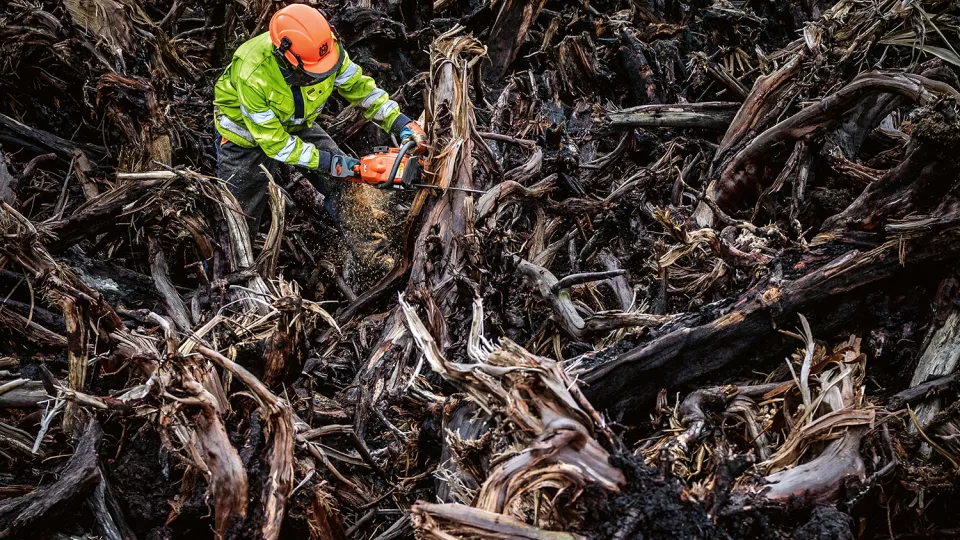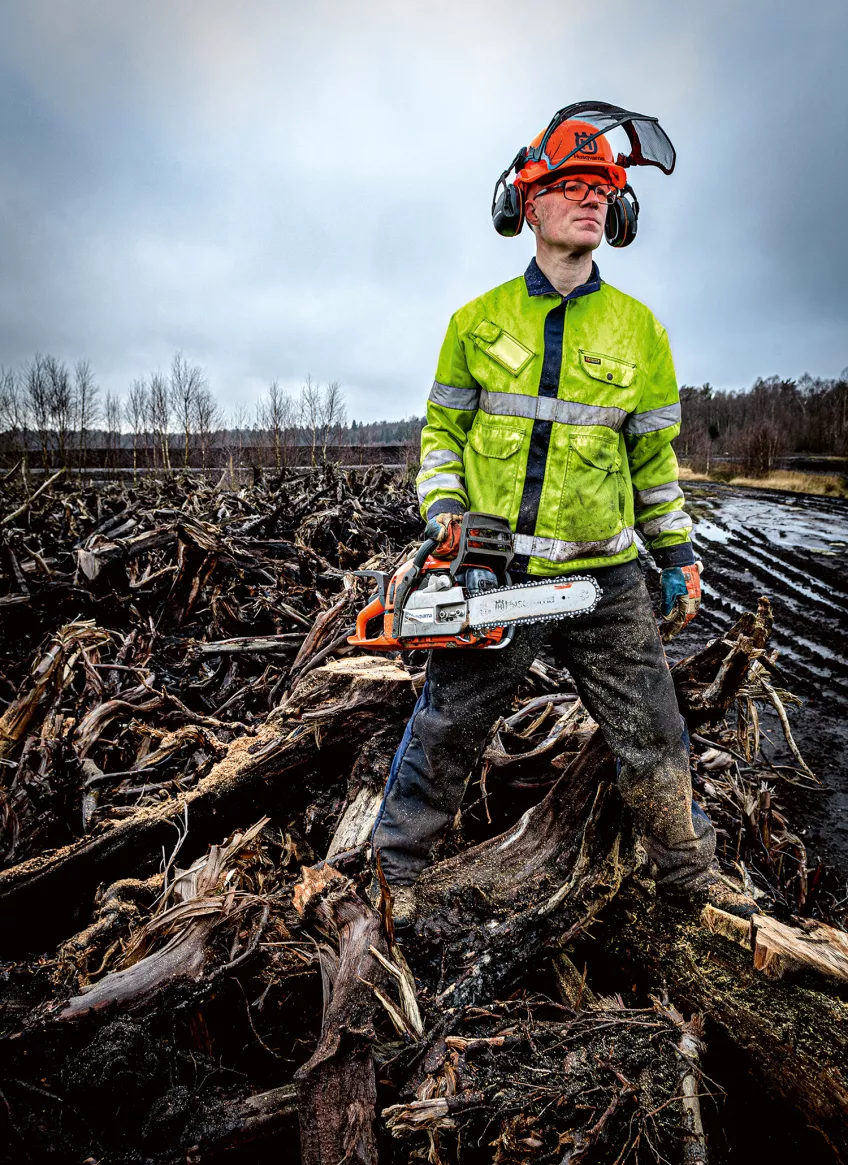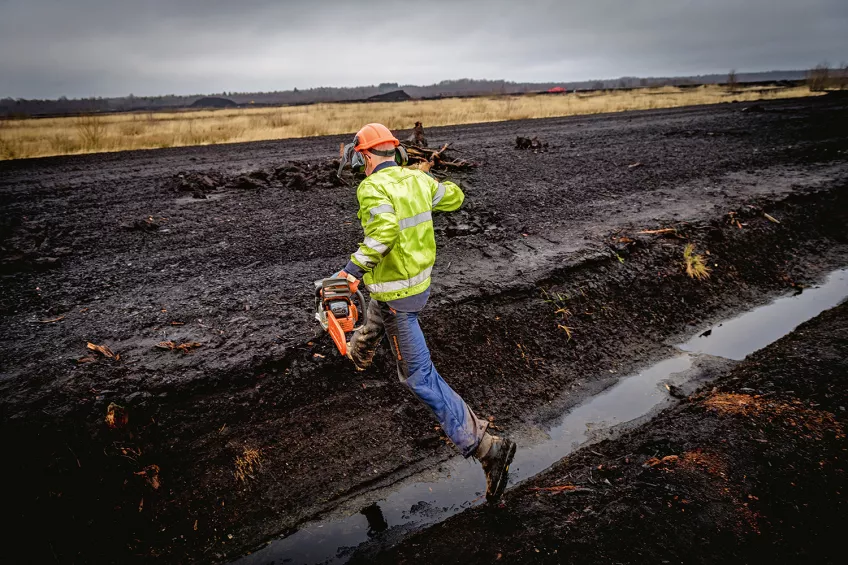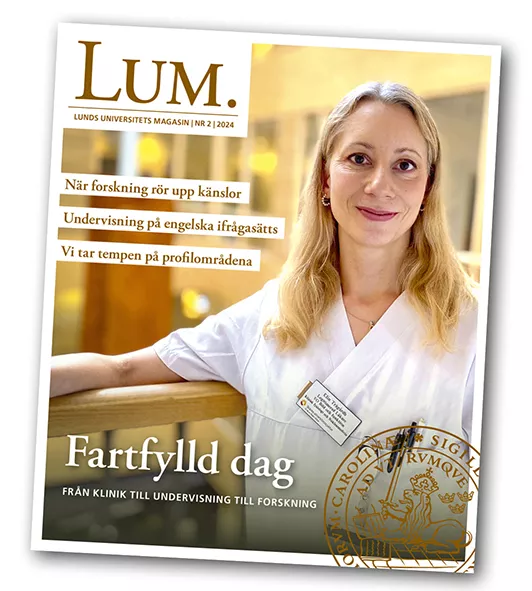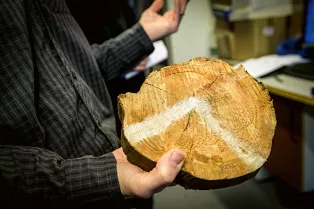With a screaming noise, the sharp blade of the chainsaw cuts through the blackened stump sticking up through the peat bog like a distorted shadowy figure. The sawdust flies and a scent of petrol and spicy wood spreads through the air. An eagle lifts from up high and starts circulating over the deserted peatlands, which on this winter day look like a bleak Gerhard Nordström painting.
Geology researcher Johannes Edvardsson turns off the chainsaw, picks up the piece of wood and starts to study its growth rings inquisitively.
The oldest trees he has found in Killhult are 8000 years old
The oldest trees he has found here in the Viss Mosse peat bog outside Killhult in Skåne are 8000 years old. It is not impossible that this very pine tree – which has laid buried at a depth of five metres and been preserved in an oxygen-free environment – is just as old.
“It is a dizzying time perspective. Sometimes I draw an 8 000-year-long timeline and place my tree finds, the pyramids and my own lifetime on it. That makes me feel pretty small”, he says and smiles.
Johannes Edvardsson is a dendrochronologist, which refers to someone who analyses tree growth rings. In his case, it mainly concerns pine and oak trees that are several thousand years old that he finds in peat bogs and ancient sea beds around Sweden and Denmark. By piecing together many tree samples he is constructing a timeline that starts approximately 8 000 years ago and extends to the current day. By studying the growth rings and analysing their carbon and oxygen isotopes, Johannes Edvardsson can map how the climate has developed in different eras, and the impact this has had on the trees. The growth rings do not just provide information on dry and wet periods but also on forest fires, landslides and harsh times that have led to bad harvests and famine.
Like trying to solve a giant Sudoku
“It is like trying to solve a giant Sudoku for many years. All of a sudden, I find a tree sample that covers a gap in the long series. It is a very satisfying feeling”, he says.
Since the last ice age, the southern Swedish climate has varied enormously. Wet and cold periods, in which wetlands have developed, were replaced by warm periods in which the peat bogs dried up and the trees were able to establish themselves. Since the trees bind greenhouse gases, many believe that the establishment of trees is positive for the climate. However, the fact is that the mires and the peat bogs bind significantly more carbon.
“The Earth’s surface consists of barely three per cent swamps and peat bogs. These bind double the amount of carbon as all forests combined. However, climate change and the rising temperatures we are experiencing now have made the wetlands around the world grow again”, he says.
The fact that the peat bogs dry out due to heat and drainage not only means that more carbon dioxide is released into the atmosphere. It also reduces the wetlands’ unique biodiversity, explains Johannes Edvardsson while he packages up the sawn-off tree sample.
Currently, he has four gaps in the southern Swedish oak chronology, which stretches back 8 000 years in time. Every time he is out in the field, he hopes to find an historical tree that could cover one of the gaps.
In the growth rings, it is also possible to see which changes are natural and which are anthropogenic. In the latter samples, it is also possible to see the years in which there were industrial releases of heavy metals.
“By studying how the historic trees have been affected we can obtain an increased understanding around how future climate change will impact our forests”, he says.
Johannes Edvardsson picks up his chainsaw and squelches towards another several-thousand-year-old pine tree that has come to light in conjunction with peat harvesting by the company Econova in the marshland. He jumps across a ditch of water and walks past a pile of elk droppings. Above the treetops on the horizon, the weak winter sun suddenly breaks through the ash-grey cloud cover.
“My goal is to complete the southern Swedish tree chronology. However, there is a lot of work remaining. So I should be busy until I retire”, says Johannes Edvardsson, who, with a determined pull, brings the chainsaw to life.


